When I saw the young maples growing in Kazuo Onuma’s garden, I immediately wanted to give his techniques a try (see “Onuma’s mini-bonsai growing techniques” for details).
I picked up some bare-root liners – young trees created for the nursery industry – and planted them in 4″ pots. By spring, all were growing well.
My plan was to let the trees grow all year before making any big cuts, but I became curious about how to take the next step. Specifically, I wondered how old the trees needed to be when I made the cut, what time of year was best for making the cut, and how low on the trunk I could cut.
I decided to cut half of the liners back in July to see how the trees would respond. And although the approach wasn’t scientific, the results will definitely influence my next round of experimentation.
Here’s a photo of twelve trident maples before and after pruning in July.
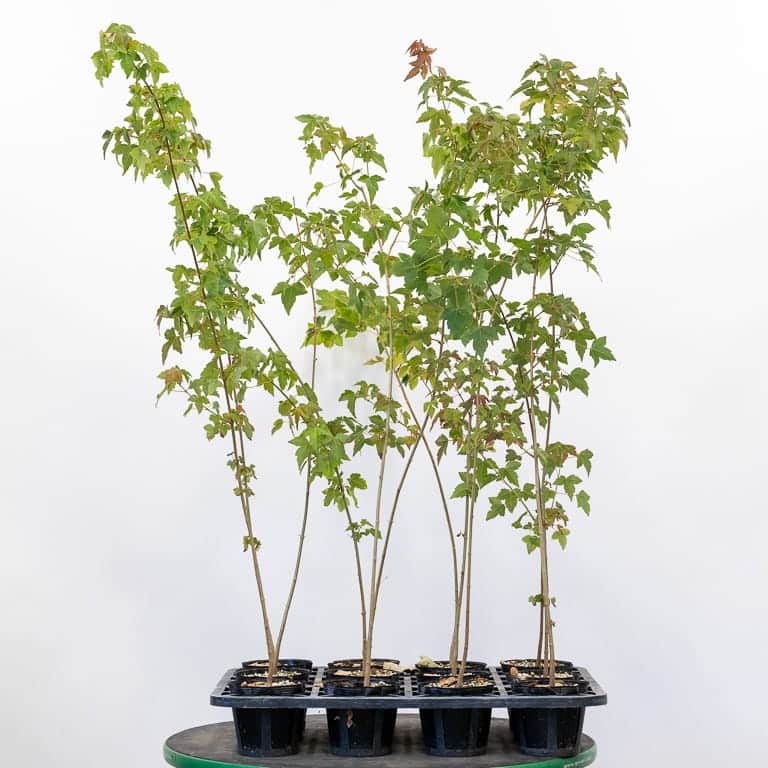
Trident maple liners
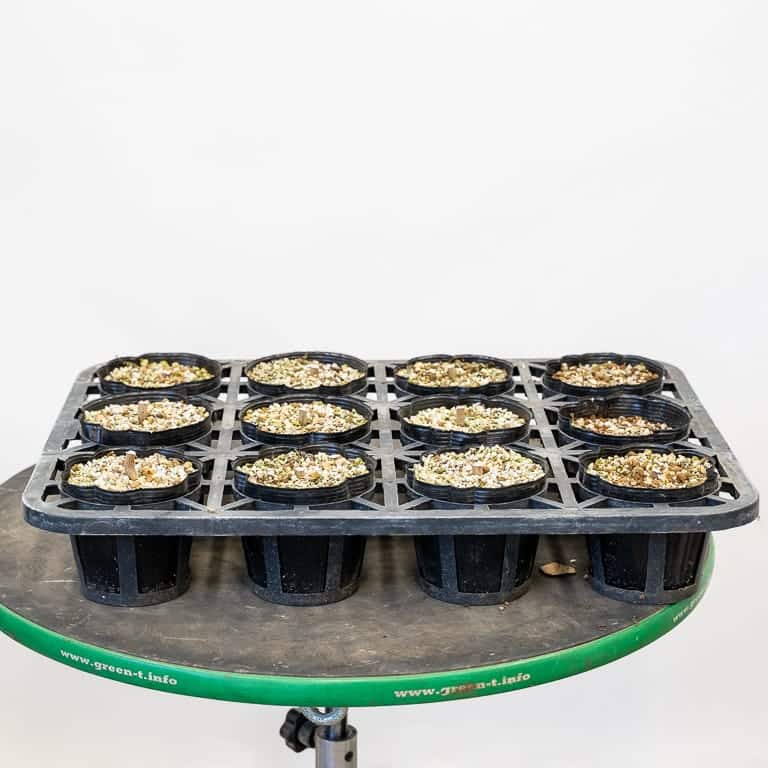
Trident maples after pruning – July, 2020
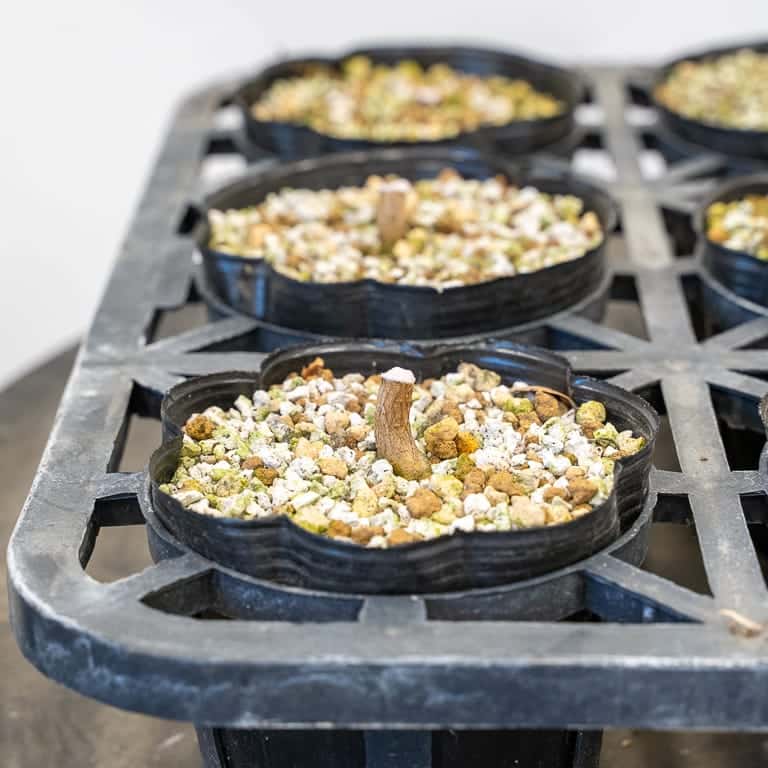
Low cut on a trident maple
I’m used to tridents sprouting wherever I prune them, but I’d never tried pruning so severely or on such young trees.
I took a similar approach with a dozen Japanese maple liners, but I took care to leave at least one healthy bud on half of the trees.
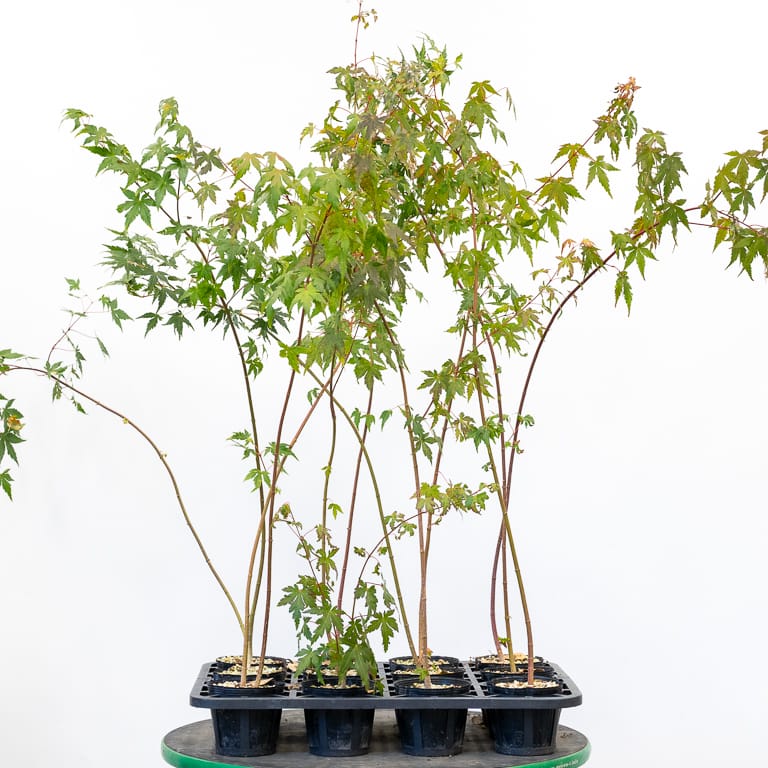
Japanese maple liners
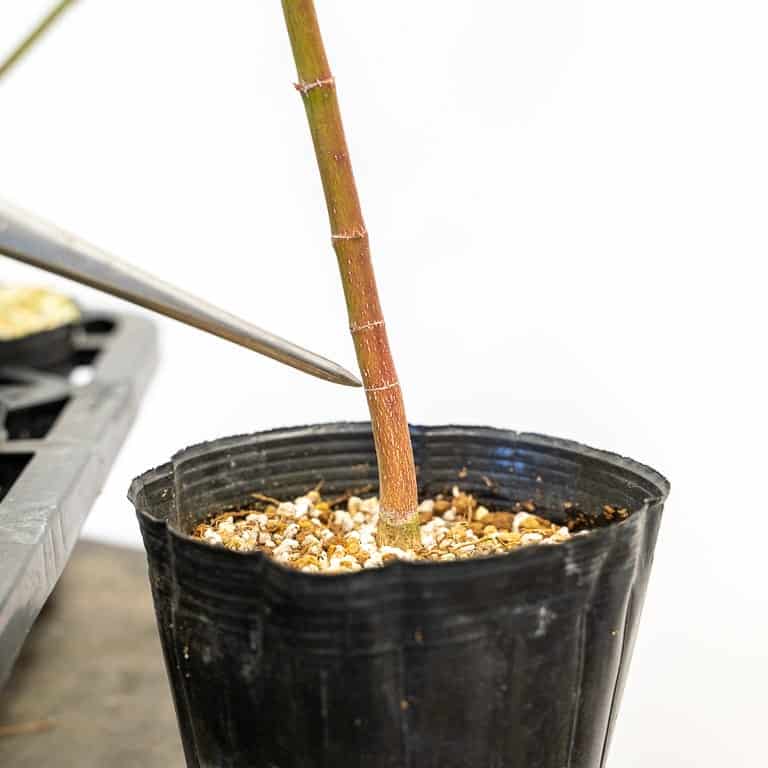
The lowest visible node
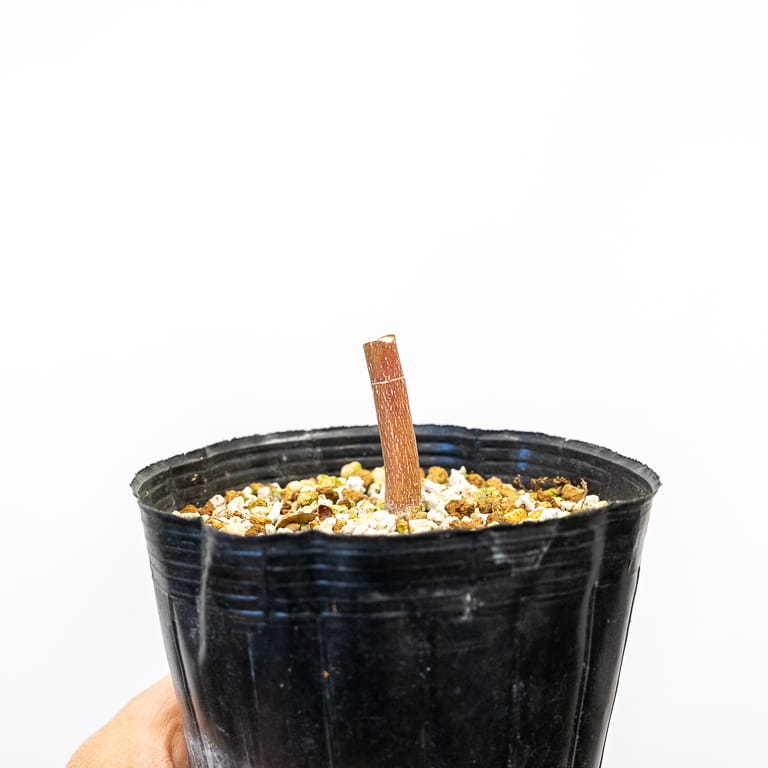
Pruning just above the node
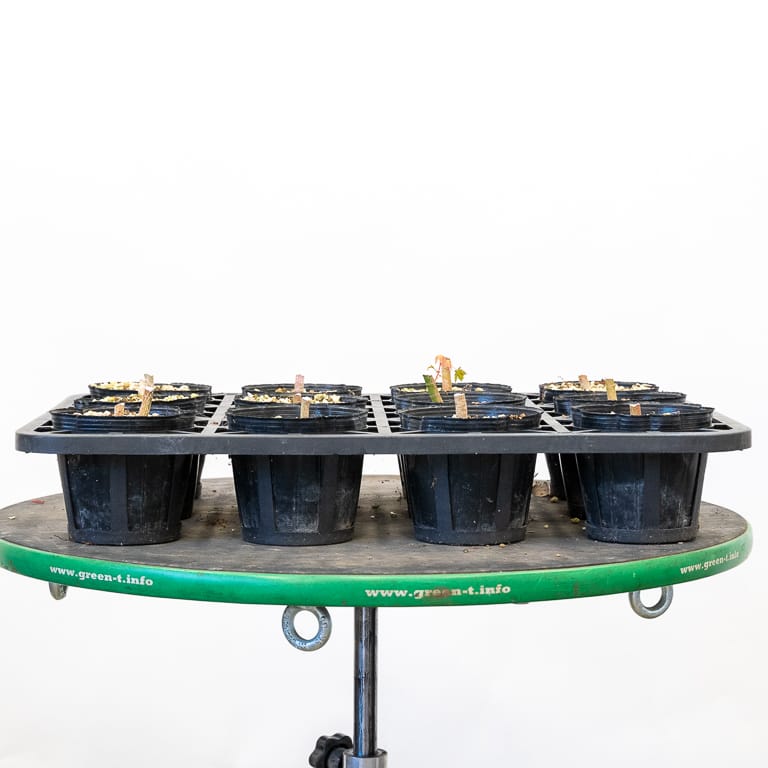
Japanese maples after pruning – July 2020
What I’d hoped was that the young trees would produce new shoots very low on the trunk, much like I’d seen in Onuma’s garden. Here’s what happened.
The Japanese maples that were cut down to a healthy bud or visible node responded well. The others produced no growth at all.
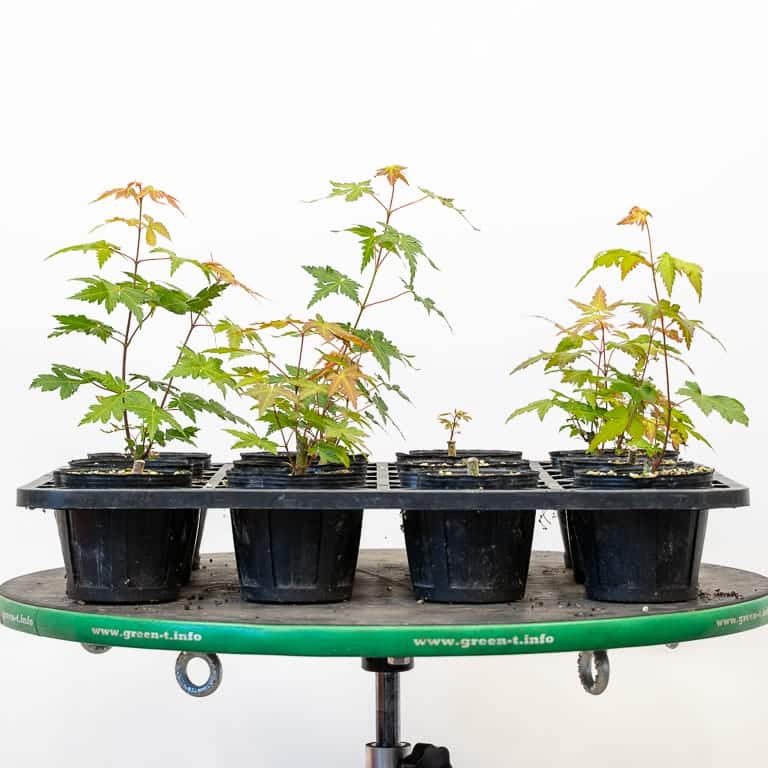
Japanese maples two months after pruning
Of the twelve Japanese maples I pruned, seven grew, and the other five failed to produce a single bud. Of those that grew, half produced two shoots, and half produced one shoot.
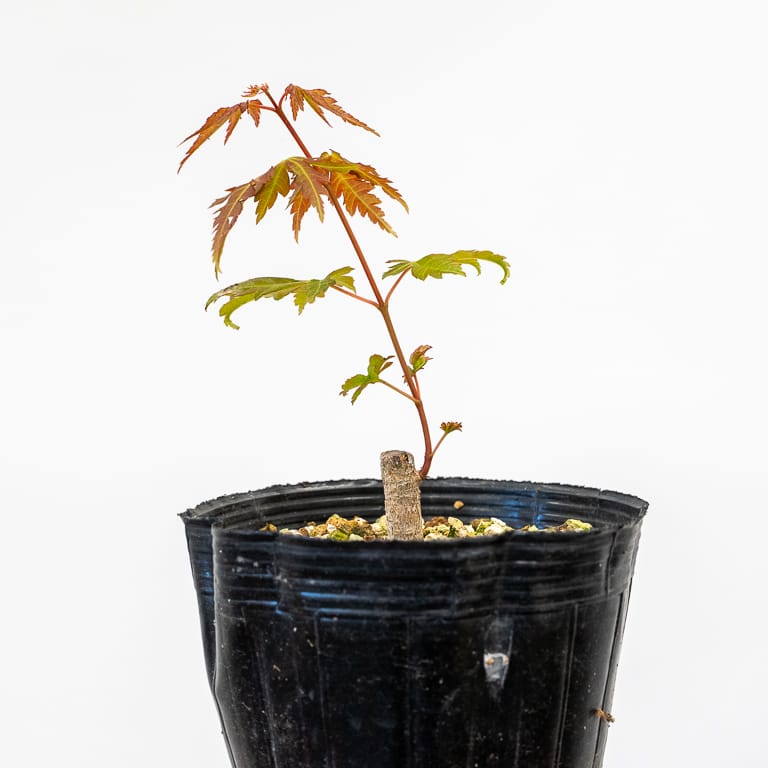
New shoot on a Japanese maple
It was a similar story with the trident maples, but because I cut all of them below the lowest visible node, none produced new growth.
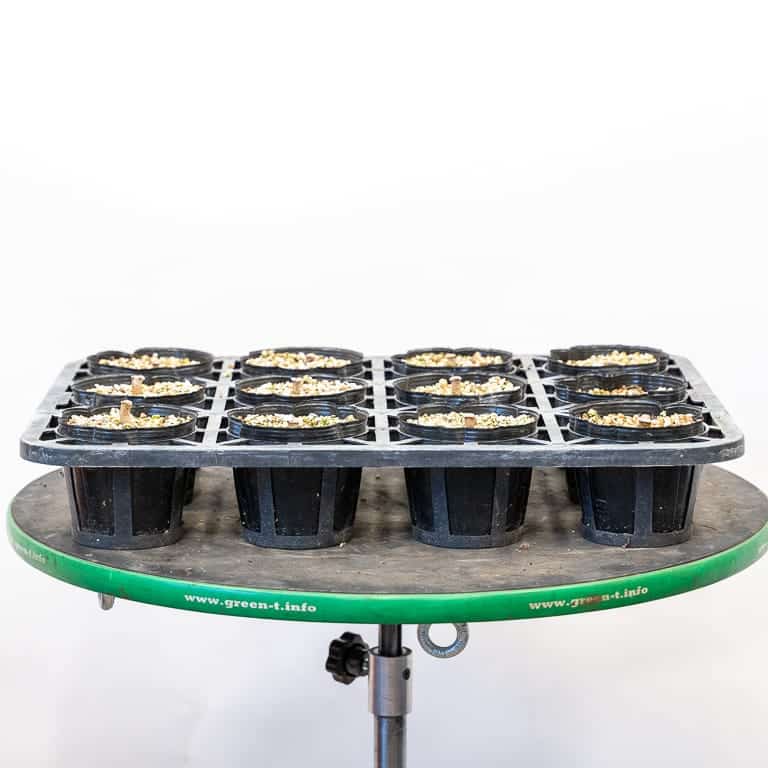
Trident maples two months after pruning
I’ll leave the trident and Japanese maples that have yet to sprout in the garden for a while longer, but I have no expectation that they’ll start growing.
The lesson seems to be that young trees need at least one healthy bud to produce a new shoot. Would waiting for the trunk to thicken make a difference – or would pruning at the start of the growing season help? Maybe, but I’m less interested in these questions than in simply pruning down to visible buds to get these trees started.
Of course, I know very little about the next steps of the process either, so I plan to let the trees that lived grow for the time being while I find more liners to work with next year.
Have questions about water or fertilizer for the Bonsai Wire podcast?
We’ll be accepting your questions related to watering, fertilizing, and water quality through September 30. If you’d like to hear from Michael, John, Andrew, or me, send your questions to talk at bonsaiwirepodcast dot com.
In the meantime, check out our recent interview with Eric Schrader in which he discusses how he develops quality bonsai from scratch at bonsaiwirepodcast.com.
Subscribe to Bonsai Tonight
New Posts Delivered Every Tuesday and Friday
Mark says
Would any trees cut down beyond any buds produce new growth?
M.
Jonas Dupuich says
Good question Mark – it wouldn’t surprise me if there were species that could easily produce low growth or even root shoots (like quince), but I don’t know of any popular bonsai species that would respond this way. That said, I’ve only tried this with a handful of species over the years and have yet to identify any obvious successes.
The bigger question is why make such a low cut! I tried for the maples in an effort to produce cone-shaped trees like I’ve seen in Japan. I’ve also tried to get low shoots to create multi-trunk specimens. I expect there are other good reasons too – we just need to find the right approach.
Tric Wright says
Seems cutting to just above lowest bud, allow new shoots, then build up soil so it looks like multi trunks from soil level might be an option?
Jonas Dupuich says
Building up the soil would work if you could get new roots where the soil is, otherwise there will always be a gap between the roots and the first split. Ideally, multi-trunk trees split very close to the roots. One inch of trunk is fine for larger trees, but an inch could be too much for some shohin trees.
Gene M says
Do you think this same approach would apply to young Chinese Elms?
Jonas Dupuich says
Hi Gene! I’d proceed with caution cutting below visible buds on Chinese elm. (In other words, I’d only want to experiment with expendable material.) Were the trunk thicker or there was callus tissue from previous cuts present, it might be easier for trees to produce buds so low.
Richard Phillips says
Great and timely information. I have a number of similar young maples that I’ve been meaning to cut back. Now, I feel more confident making the cut with some hope of seeing new growth.
Jonas Dupuich says
Am happy to hear it Richard – sounds like a fun project!
JimmyG says
Another timely post Jonas! I have a tall skinny Maple liner that I just put some bends in, and I was just wondering about chopping it. Is it too late in the season for this kind of cutback, or would you wait til next spring/summer?
Jonas Dupuich says
Thanks Jimmy! I’d hold off on pruning now as cutting when the tree is still active could trigger new growth when the tree is almost ready to shut down for winter. I’d aim to prune closer to the start of the growing season next year or in May/June.
Barry McDonnell says
Ironically, Jonas, while preparing my tropicals to bring inside for the winter(S.E. PA) I had two ficus in a group planting die back to the very lower trunk. So I tried what you did to your trident liners. We’ll see if anything develops between now and next spring.
Jonas Dupuich says
It’ll be interesting to see. Usually tropicals respond best when they’re active in summer – fingers crossed!
Zack Clayton says
Barry, in central Ohio (Columbus) I have had good success completely defoliating F. miicrocarpa mid to late September. I do this on healthy trees only and my winter storage is in translucent plastic storage tubs from a big box store. It increases the humidity in the otherwise arid environment of a house. They bud freely starting in late November – early December. I do heavy pruning (1/4 to 3/4+ inch branches) in spring when I take them outside to give them the summer to recover. Since your trees self pruned, try the plastic storage. BTW, my lighting is 4′ LED shop lights of at least 4200 lumens directly over the box top – NO lid on the box. As always, YMMV so try defoliation first with reject stock.
Yaroslav says
Thank you for sharing your experiments. You mentioned pruning at the beginning of the growing season: but it’s usually not recommended because of bleeding, which weaken the tree. What do you think about it?
Jonas Dupuich says
Good question – the bleeding question is an interesting one. Some people subscribe to that concern and others disregard it. I’d love to see some data – or at least some good examples – that show an effect one way or the other.
I don’t have a strong opinion as I’ve seen trees respond well to work even when they bleed. I’ve also seen the work done at repotting time as repotting can reduce the fluid lost through the branches from pruning.
Alain K. says
You’re right to compare cutting blow the lowest visible node to root cutting: as you said, it works with quince, but also with apple trees and others, interesting to form visible roots bonsai (neagari). All my attemps to make root cuttings with either palmatum or trisent maples have failed. The only maple that I’ve found very easy to reproduce with this method is Acer campestris, the field maple. Someone told me that it works also with Acer cappadocicum (not a favourite for bonsai), and there may be other maple species.
About “bleeding”, I’ve noticed that it is much reduced when you prune the roots, and most of my bonsai friends say it is not a pbroblem anyway.
… and thanks a lot for all the tips on your blog.
Jonas Dupuich says
Thanks Alain – great point! I think you’ve just explained how Onuma does such a great job with his small chojubai as he’s triggering root shoots, that he exposes down the road, by repeatedly cutting so low on the trunk. I’m going to give this a try!
Good to know about the maples for which the approach might work. It’ll be interesting to find out if any others respond like this.